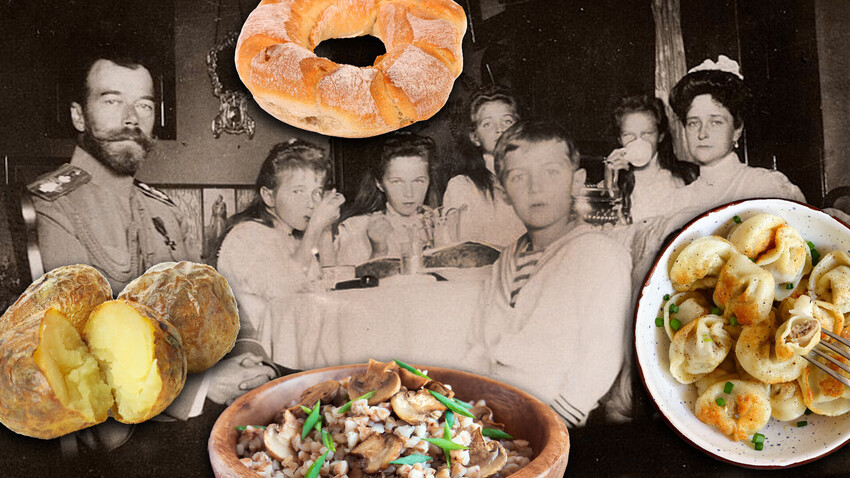
A variety of dishes were prepared for the Russian imperial family. But Nicholas II loved simple food, like baked potatoes or pelmeni (dumplings).
Russia Beyond (Romanov collection / Yale University; Legion Media)Feeding the imperial family and managing its kitchen in the early 20th century was an entire production. The tsar’s kitchen served not just daily meals to the imperial family but also provided food for holiday and official feasts.
The kitchen had three parts – the kitchen proper, the confectionery, and the winery. The confectionery had 20 workers, the kitchen proper – about 150, and 10 of them prepared food exclusively for the imperial family.

Tsar and family, 1902. Elena Samokish-Sudkovskaya.
Public DomainFirst, breakfast for the members of the imperial family was served in their chambers. It consisted of coffee, tea, or cocoa, depending on one’s choice, as well as butter and bread. If one wished, they could also ask for ham and eggs. Nicholas II’s spouse, Alexandra Feodorovna, really loved Russian kalaches. They were often served for breakfast.
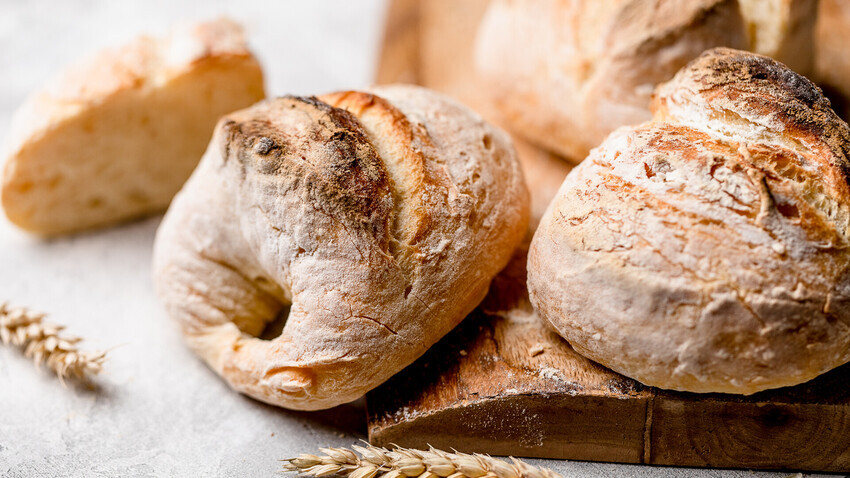
Moscow kalach.
Yulia MulinoUnder Nicholas, “Sir Yermolaev” was the head baker. Surviving accounts testify that he was “a great master of the craft” and prepared “superb cookies, small – the size of a little kopeck coin – kalaches, milky kaiser rolls, amazing puff-pastry buns and twisted salty loafs.”
The second breakfast, which was more like lunch according to modern standards, was served at 13:00 for the emperor, and usually included five courses. Officials and guests often came for this meal.
Appetizers were placed on a separate table, and anyone could come and get what they wanted. For a long time, French chef and head waiter Pierre Cubat served at the tsarist court. He was a master of appetizers.
As appetizers, small sandwiches, herring, balyk and caviar were served. Several hot options were also on the tsarist menu, like sausages or roasted ham. After the appetizers, which were eaten standing, everyone sat down at the table.
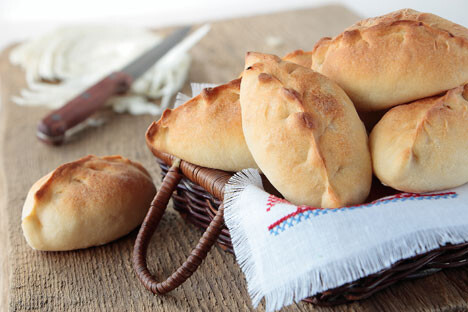
Russian pies.
ShutterstockThe menu for such a late “breakfast” that was served on September 9, 1907 has been preserved: a pearl barley soup with pickles, carrots, and peas, pirozhki, mayonnaise made with salmon (thick whipped fish sauce), beef filet with potatoes, chicken breast rissoles, pears dipped in sherry, and pie stuffed with sweet rice porridge with lingonberries.
At 17:00, tea was served in the imperial chambers. Empress Alexandra Feodorovna was raised in England at the court of Queen Victoria, so she faithfully followed the tradition of the five o’clock tea. She enjoyed tea with her husband. With tea, a hot kalach and a plate with butter were served. During the Lenten season and other times of religious fasting, butter was excluded. Instead, the table hosted baranki, bread rolls, and peeled nuts.
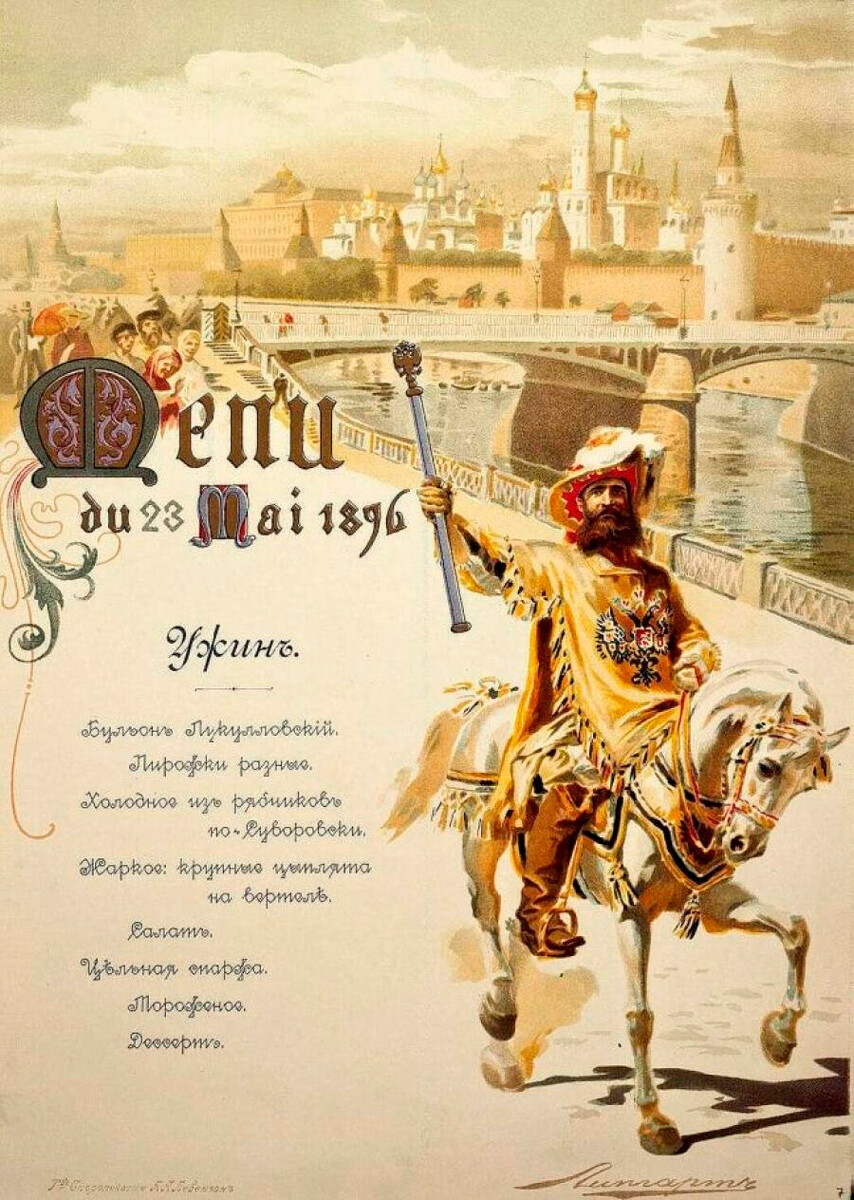
Lunch menu, 1896.
Romanov collection/ Yale UniversityLunch was served at 20:00. It started with soup and pirozhki; then fish and roast were served, along with vegetables, sweets, fruit, and coffee. On festive occasions the number of courses increased. Different wines were also served for lunch; and a liqueur was served with coffee.
Children younger than 8-10 years old usually ate separately from adults, and so they had a more traditional daily schedule.
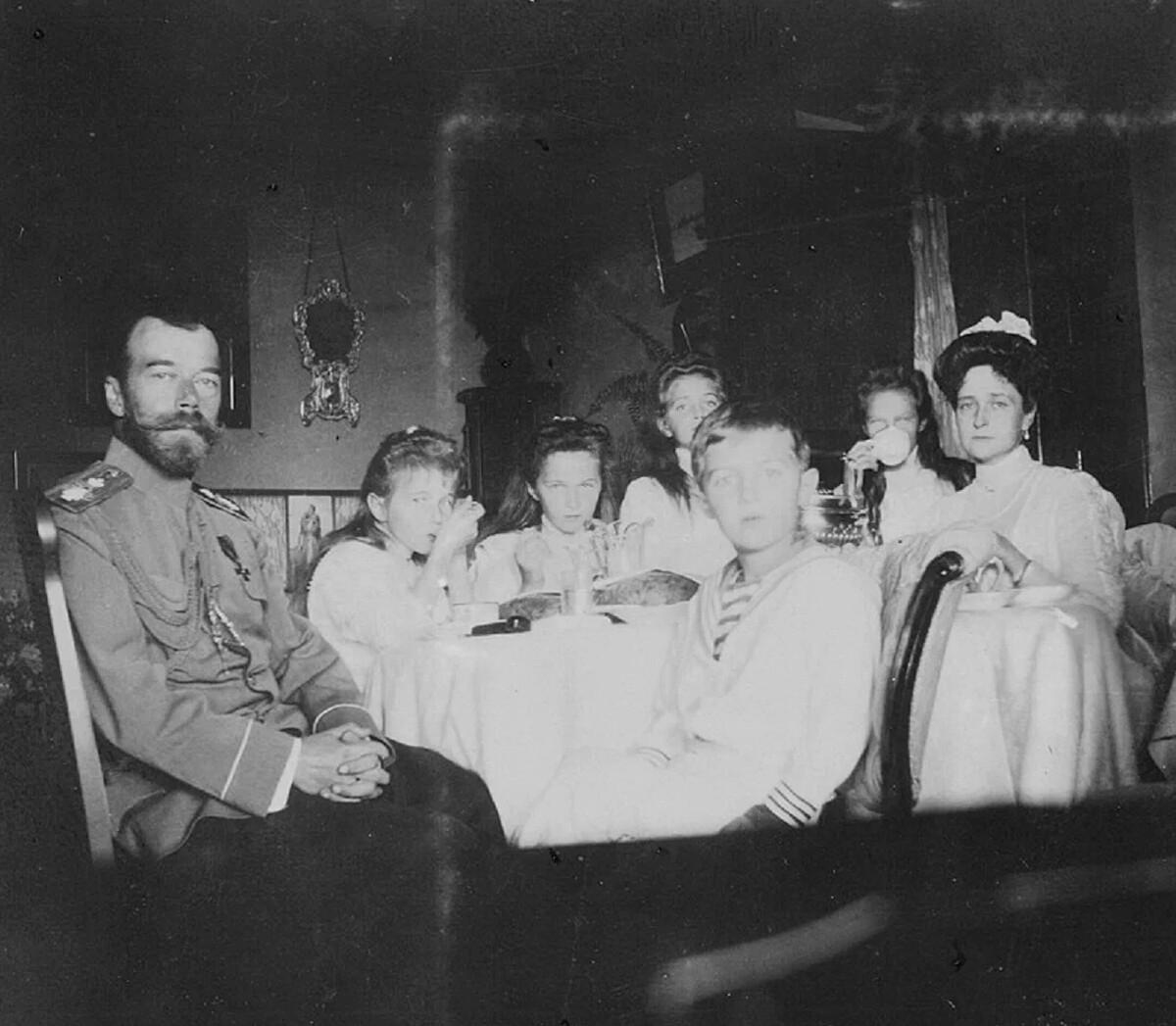
The tsar’s dining table was also supplied with fruits and berries from the Gatchina and Ropsha greenhouses. Many of these greenhouses were heated year-round, which allowed the imperial family to enjoy wild and cultivated strawberries, among other things, even in early spring.
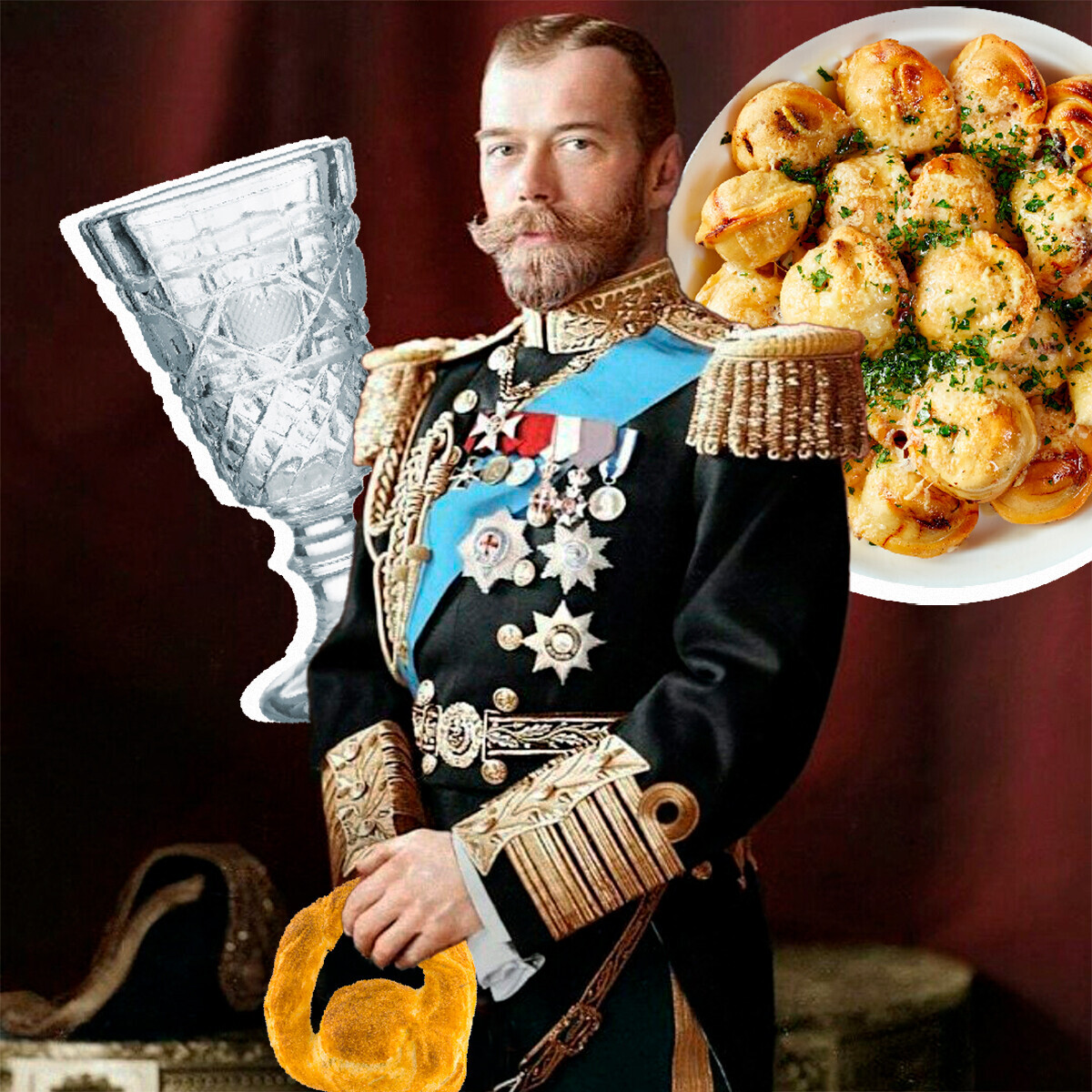
According to the recollections of contemporaries, Nicholas was moderate in eating; he regularly weighed himself and often did sports.
Nicholas loved potatoes. Once, he saw in Crimea how one of the officials was carrying a bag of new potatoes from the market, and he kindly asked to share them. As a boy, Nicholas baked potatoes with his brothers and sisters in the park of the Anichkov Palace where they lived in downtown St. Petersburg. Later, he did so with his own son, the Tsarevich Alexei, but in the Alexander Estate Park where they lived outside of the city.
Also “Dragomirov porridge”, named after Russian army General Dragomirov, was one of his favorite dishes – buckwheat porridge with mushrooms and cream. It differed from the regular porridge by the fact that it was served as a pie.
Also, Nicholas liked pelmeni and vareniki. Aboard the imperial yacht Standart, he often enjoyed pelmeni fried on a frying pan.
However, he couldn’t stand caviar. Standart officers noted that “the sovereign really liked appetizers, apart from caviar, Atlantic salmon, and salted fish overall.” There was a simple explanation for this – once, when returning from the East, Nicholas traveled along the Siberian route. At train stations along the way, he was greeted with bread and salt, salted fish, and caviar. The weather was hot, and Nicholas was often thirsty. Ever since then, he lost interest in salted fish and caviar.
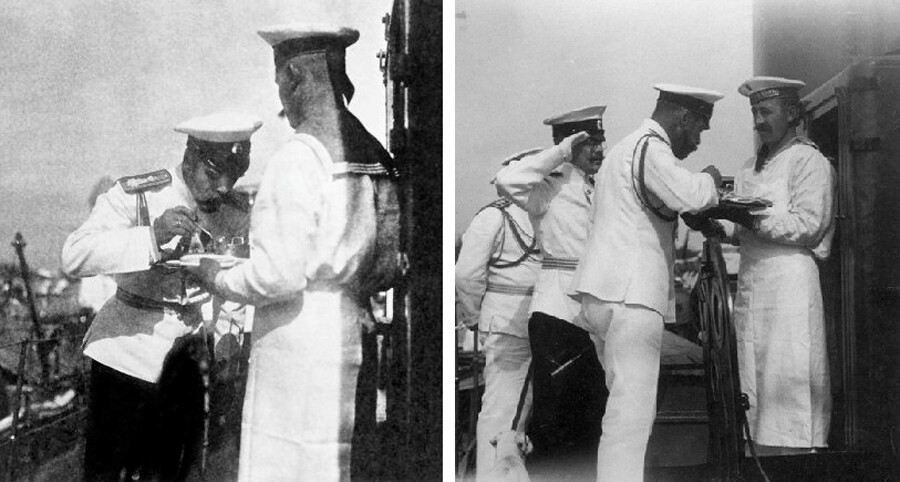
Nicholas II on the yacht Standart tasting food.
Romanov collection / Yale UniversityAccording to lady-in-waiting Baroness S. Buxdoeveden, “the sovereign preferred simple dishes, simple roasts and chicken.” Indeed, these dishes often appear in surviving menus of that era.
It’s known that the emperor enjoyed port wine. At first, it was imported from Portugal, but after Nicholas tried Livadia port wine, the purchases were stopped. His spouse liked the dessert wine Lacryma Christi (“Christ’s tears”), which was also produced in “Massandra”, a winery in Crimea.
More than ten people managed the alcoholic beverages in the imperial kitchen. They kept and selected wines, vodkas, beer, mead, and kvass for the court.
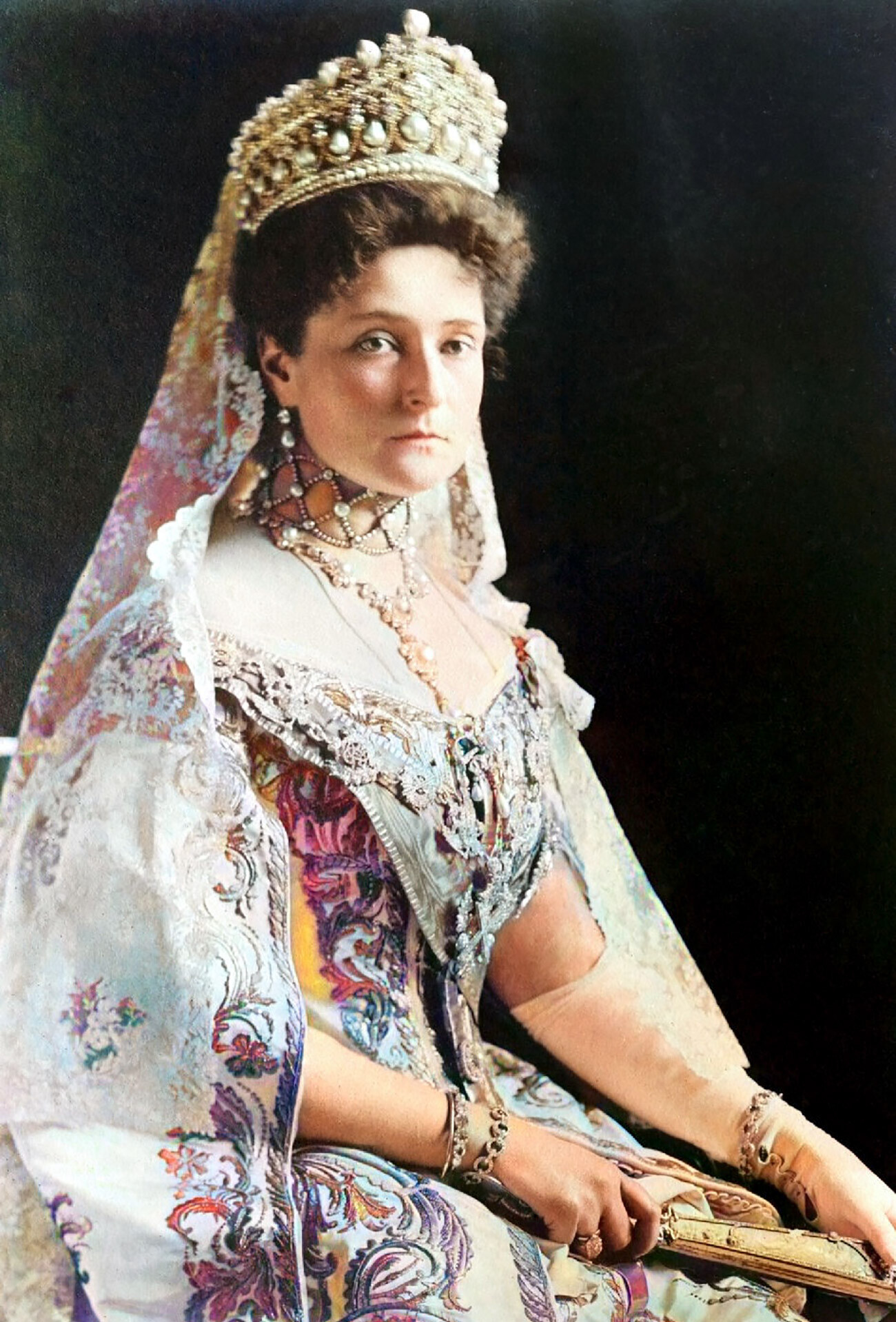
Empress Alexandra Feodorovna.
Public domainThe food for Alexandra Feodorovna was often prepared and served separately. She almost never consumed meat and fish, but she did eat eggs, cheese, and butter. Most likely, she maintained her diet not for ethical reasons, but rather because she wished to maintain her figure and health. Aside from that, she strictly adhered to Lenten fasting.
There are accounts of how when aboard the Standart she ordered baked potatoes stuffed with spinach. Describing the trip of the imperial family on this yacht along the Volga River in 1913, officer N. Sablin mentioned that “the empress herself only ate two soft-boiled eggs this day.”
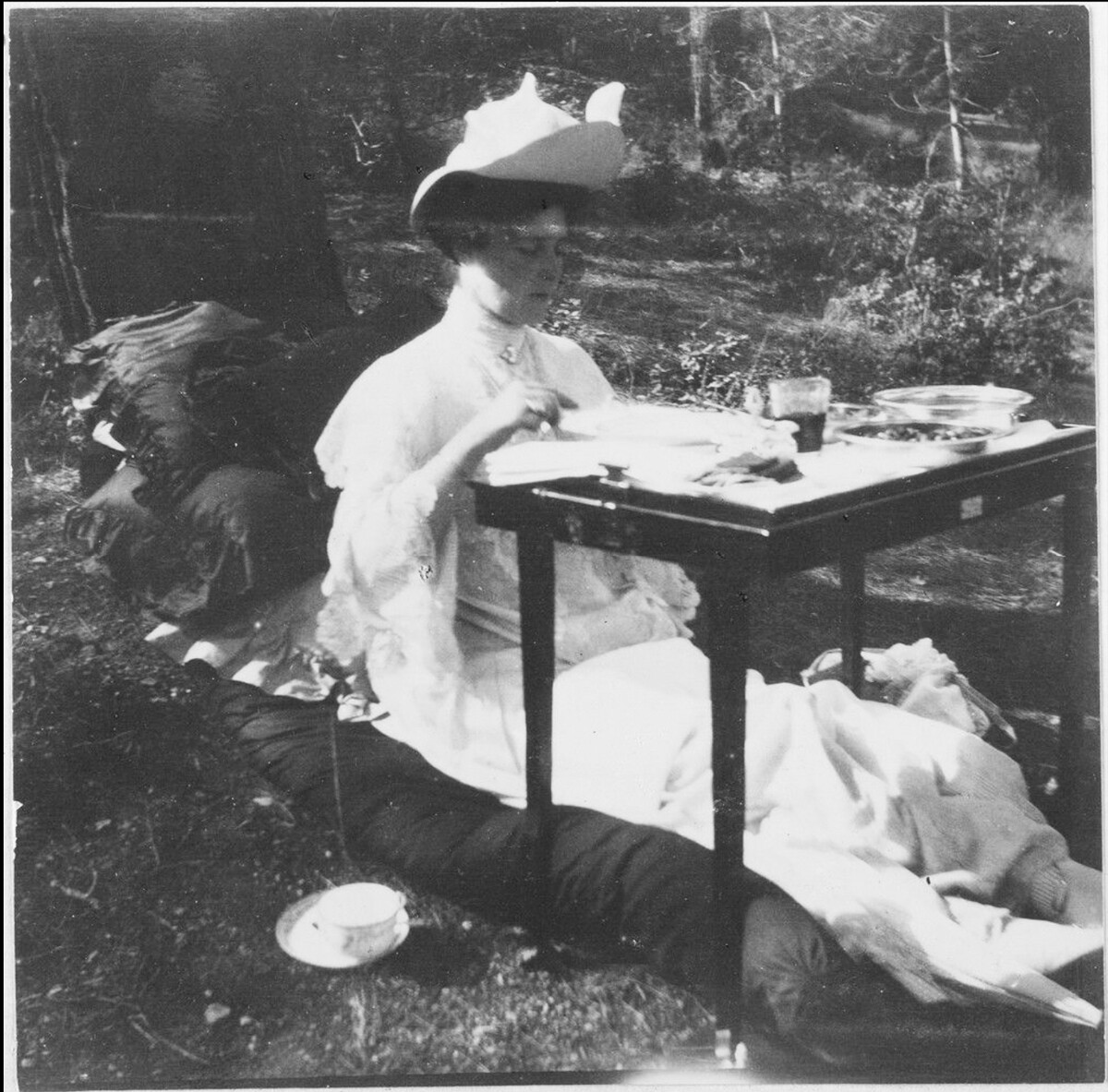
Alexandra Feodorovna.
Romanov collection / Yale UniversityAccounts also survive that the empress ordered sweets from abroad using her own personal money.

The Grand Duchesses hunting for mushrooms in a forest.
Public domain, color by KlimbimWhile small, the tsar’s children were not invited to the main table, and instead, they dined with their teachers. Only sometimes the children were invited to the table with their parents, so they would grow accustomed to conversing with adults. During such gatherings dishes were first served to the emperor and empress, and then to the children.
The children were not spoiled in any way. Nicholas and Alexandra raised them like regular children.
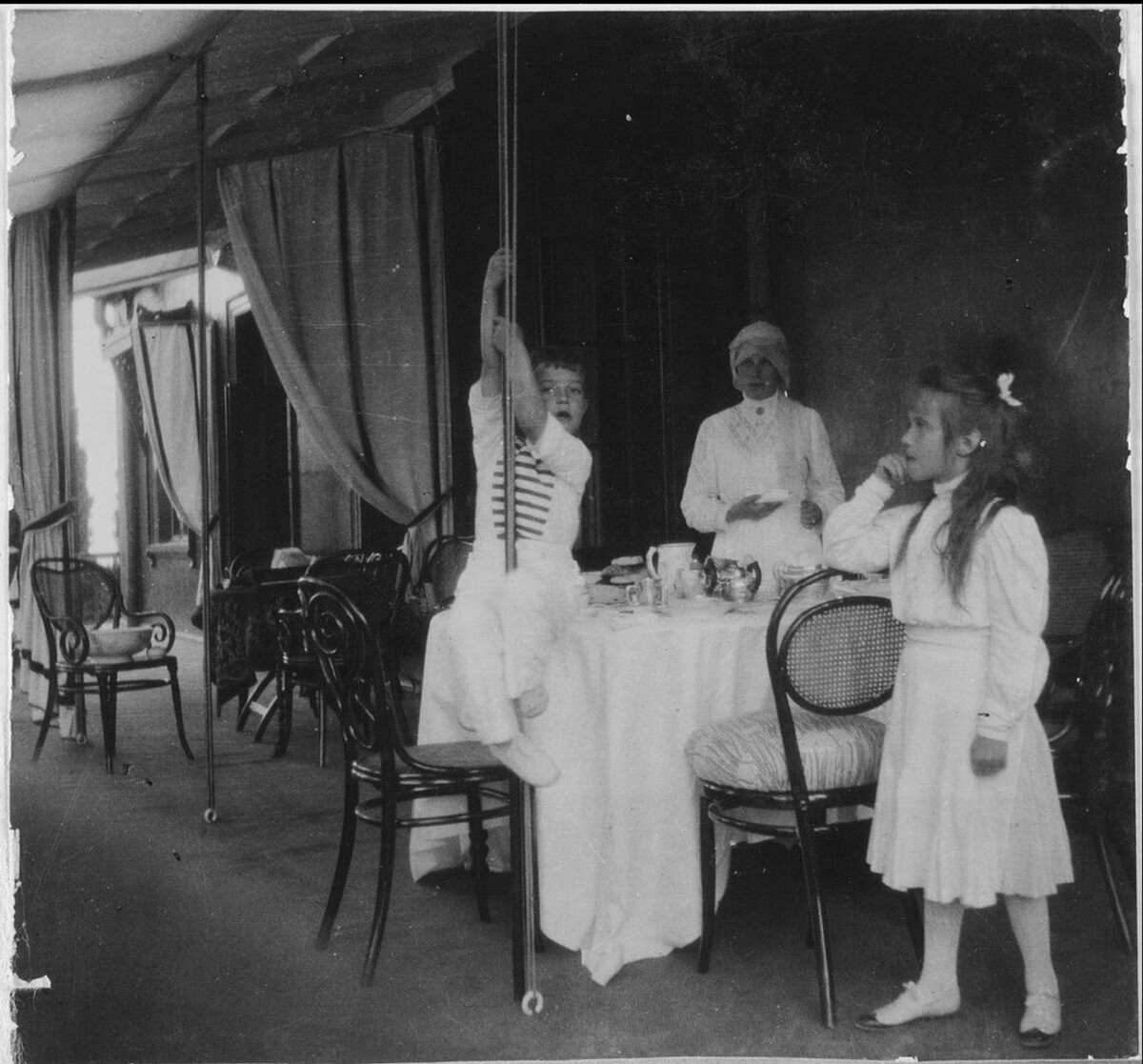
Tsarevich Alexei with one of his sisters.
Romanov collection / Yale UniversityDuring World War I, one day Tsarevich Alexei was in the army’s headquarters with his father, but he refused to eat the sumptuous food that was fit for royalty. Alexei said that his favorite food was “shchi, and porridge, and rye bread, which all my soldiers eat.”
Sometimes, however, he bought his own sweets. The imperial children received an allowance for personal spending. For example, the Tsarevich sometimes spent his money buying the famous Georges Bormann chocolates and rock candy from Abrikosov’s.
Dear readers,
Our website and social media accounts are under threat of being restricted or banned, due to the current circumstances. So, to keep up with our latest content, simply do the following:
Subscribe to our Telegram channels: Russia Beyond and The Russian Kitchen
Subscribe to our weekly email newsletter
Enable push notifications on our website
Install a VPN service on your computer and/or phone to have access to our website, even if it is blocked in your country
If using any of Russia Beyond's content, partly or in full, always provide an active hyperlink to the original material.
Subscribe
to our newsletter!
Get the week's best stories straight to your inbox